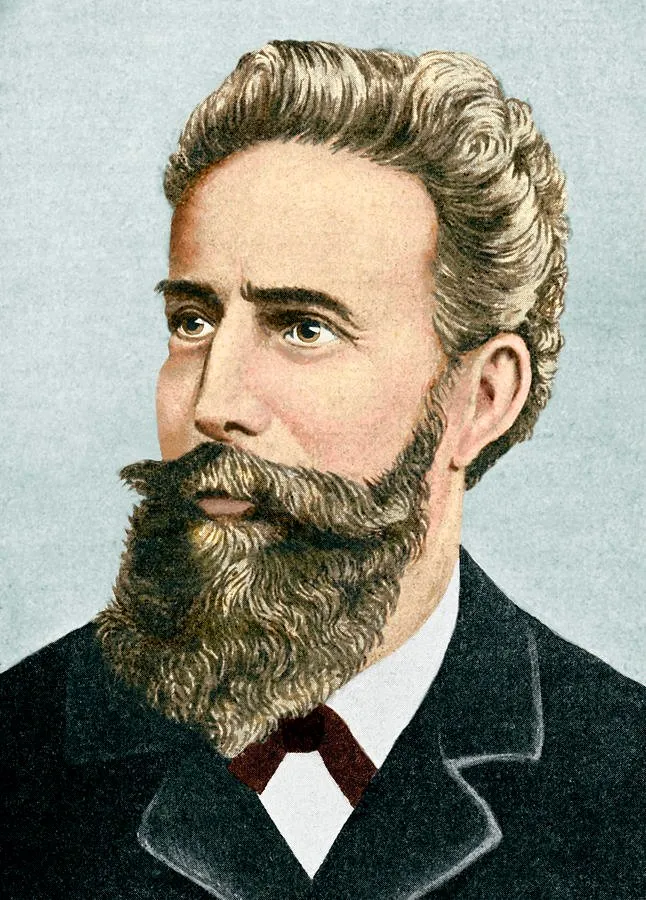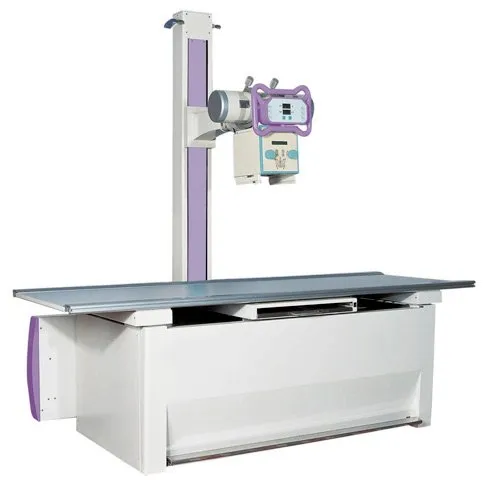Wilhelm Roentgen, a German Professor, was the first person who accidentally discovered X-rays in 1895 while he was testing with cathode ray tube. One day he detected that a fluorescent screen painted with barium platinocyanide placed unintentionally in the area of the tube started shining with a faint greenish yellow glow. He then found that as soon as the tube stopped working, the glow vanished, it reappeared once again when the tube started working. The glow was noticeable even the tube was covered with a black paper to stop the escape of visible light.

Furthermore, a photographic plate wrapped in lightproof black paper was discovered, when developed, to have been impacted by the tube in working condition, just as if it was kept open to light. These facts proved that the discharge tube was releasing some kind of radiation which was invisible and penetrating in nature. From more study, Roentgen figured that the unknown radiation is coming out of the fluorescent glass wall of the tube where the cathode rays are colliding. As we hold the letter ‘X’ for the unknown quantity, Roentgen named this unknown radiation as X-rays until the pending further enquiry get finished. However, the nature of X-rays has been revealed after a long time, the term ‘X-rays’ has continued up to present time.
Biography of Wilhelm Roentgen
Wilhelm Roentgen was born on 27th March, 1845 in the small city of Lennep, Germany. His father was a cloth merchant. They later moved to Apeldoorn in Netherlands where Roentgen was grown up. To complete his early education he was admitted to a boarding school in Apeldoorn, Institute of Martinus Herman van Doorn. Though he was not a shining student, but he showed his keen interest in nature when he was in young stage. In 1862, he took admission in a technical school in Utrecht named, Ambachts School. But he was expelled from that school due to his involvement in a contrivance against one of his teacher.

In 1865, when he couldn’t take admission in University of Utrecht due to lack of required credentials, he took admission in the Federal Polytechnic Institute in Zurich where he completed his mechanical engineering course. There he learned many things with the help of his teachers Kundt and Clausius. In 1869, he completed his graduation and received his Ph D degree from the University of Zurich. In the same year, he became the assistance of Kundt and went along with him to Wurzburg city in Germany. In 1873, he joined the University of Strasburg, where he later became a lecturer in 1874.
In 1875, he became professor of Academy of Agriculture at Hohenheim, Wurttemberg. In 1876, he became professor at the University of Strasburg. In 1879, 1888 and 1900, he held the position of Chair of Physics at the Universities of Ciessen, Wurzburg, and Munich respectively.
He also refused many offers that he got for the Chair of physics from the universities of Jena, Utrecht and Leipzig in 1886, 1888 and 1889 respectively. He also declined the offer for the presidency post of the Physikalisch-Technische Reichsanstalt at Berlin. The offer for the Chair of Physics of the Berlin Academy was also refused by him.

Roentgen’s invention proved to be a miracle in medical field. It quickly became a vital diagnostic tool which helped doctors observe inside the human body for the first time without any kind of surgery. In 1897, during Balkan war, military used X-rays to find bullets and broken bones inside the body of the injured soldiers. In 1901, Roentgen was honored with the first ever Nobel Prize in Physics.